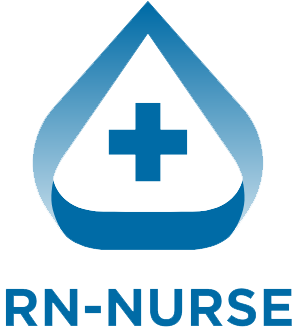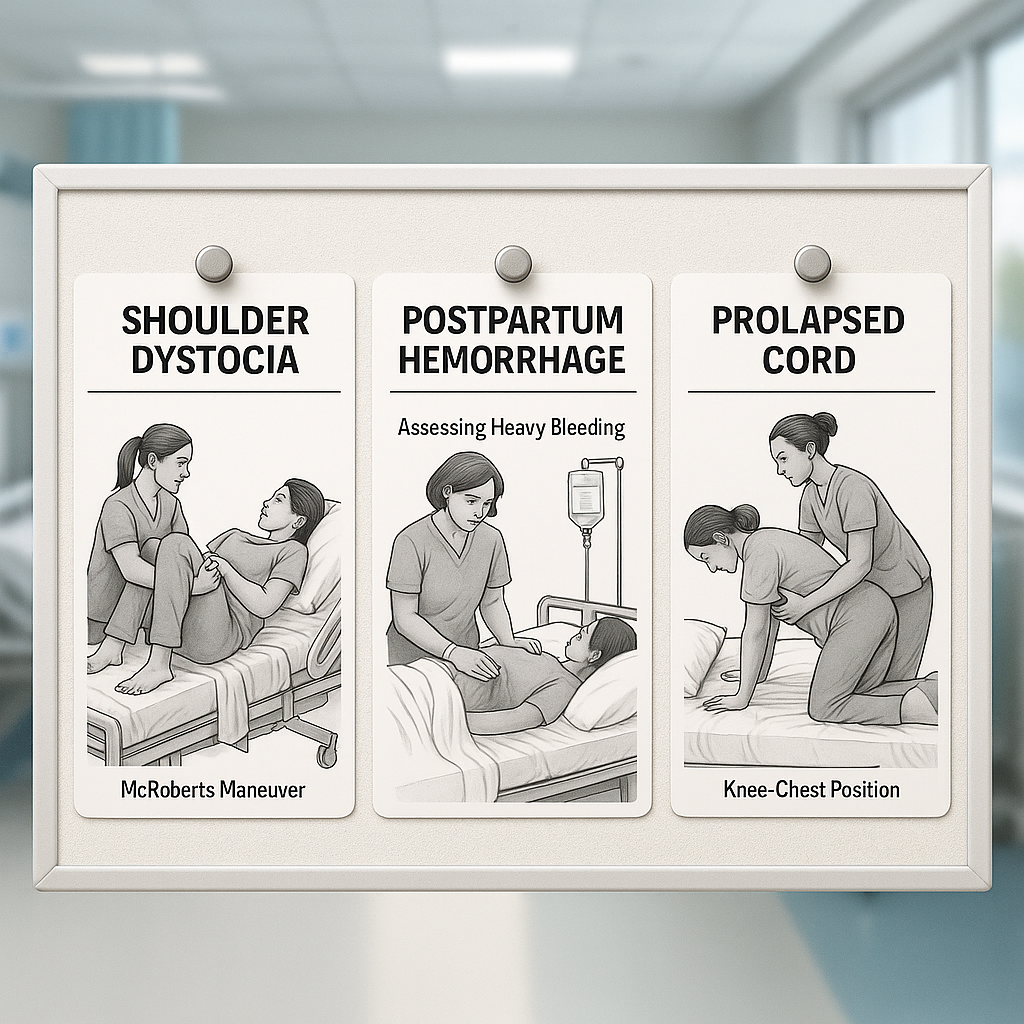In obstetrics, emergencies can happen suddenly and require immediate action from the nurse and healthcare team. For NCLEX preparation and real-life nursing practice, knowing what to do during shoulder dystocia, postpartum hemorrhage, and prolapsed cord can save lives. These “OB Emergency Quick Cards” act as a simplified guide for every RN nurse, nursing student, or registered nurse reviewing critical maternity content.
Why OB Emergencies Matter for Nurses and NCLEX
OB emergencies are common on the NCLEX because they test a nurse’s ability to prioritize, intervene quickly, and ensure maternal-fetal safety. Nursing bundles and quick-reference cards are designed to help nurses recall interventions under stress. As a registered nurse or nursing student, having these steps memorized can mean the difference between positive and poor outcomes.
1. Shoulder Dystocia
Definition: When the fetal shoulders become stuck behind the mother’s pubic bone after the head delivers.
Nursing Priorities (NCLEX Focus):
- Call for help immediately.
- Perform McRoberts maneuver (legs flexed toward the abdomen).
- Apply suprapubic pressure—never fundal pressure.
- Monitor for fetal distress and prepare for neonatal resuscitation.
📌 Quick NCLEX Tip: Always prioritize maternal position changes and suprapubic pressure before more invasive measures.
2. Postpartum Hemorrhage (PPH)
Definition: Excessive bleeding (>500 mL after vaginal birth or >1000 mL after cesarean).
Nursing Priorities (NCLEX Focus):
- Massage the fundus if boggy.
- Administer oxytocin (Pitocin) as ordered.
- Check for retained placenta or lacerations.
- Monitor vital signs and blood loss closely.
- Prepare for additional medications (misoprostol, methergine) or surgical intervention.
📌 Quick NCLEX Tip: A firm, midline fundus with continued bleeding suggests lacerations, not uterine atony.
3. Prolapsed Umbilical Cord
Definition: When the umbilical cord slips below the presenting part of the fetus, leading to cord compression and loss of oxygen.
Nursing Priorities (NCLEX Focus):
- Call for help immediately.
- Use a sterile gloved hand to relieve pressure on the cord.
- Place the mother in knee-chest or Trendelenburg position.
- Apply warm, sterile saline gauze to exposed cord.
- Prepare for an emergency C-section.
📌 Quick NCLEX Tip: Relieving pressure on the cord is the first action before preparing for delivery.
OB Emergency Quick Card Summary
| Emergency | First Nursing Action | NCLEX Key Focus |
|---|---|---|
| Shoulder Dystocia | McRoberts + suprapubic pressure | Maternal positioning |
| Postpartum Hemorrhage | Fundal massage | Distinguish uterine atony vs. laceration |
| Prolapsed Cord | Relieve pressure on cord | Fetal oxygenation priority |
These quick guides appear in many nursing bundles and NCLEX prep resources because they represent life-threatening situations where nurses play a critical role.
Final NCLEX & Nursing Takeaway
Every registered nurse, RN nurse, and nursing student must be able to quickly recall emergency steps in OB nursing. Whether on the NCLEX exam or at the bedside, your role as a nurse is to recognize danger signs and act fast. By practicing with nursing bundles and OB quick cards, you’ll be ready to handle shoulder dystocia, postpartum hemorrhage, and prolapsed cord with confidence.

